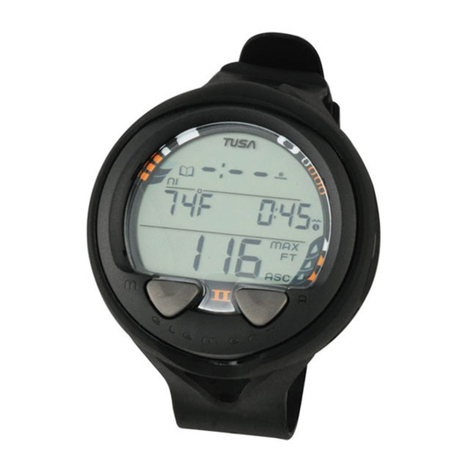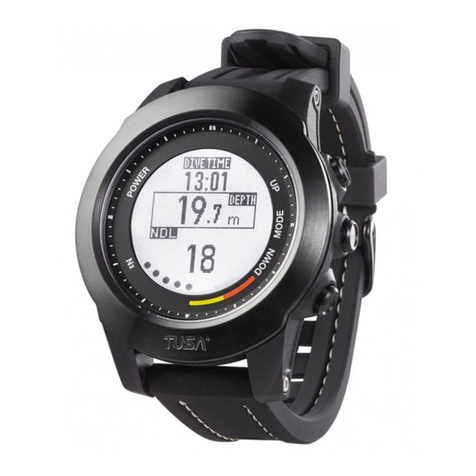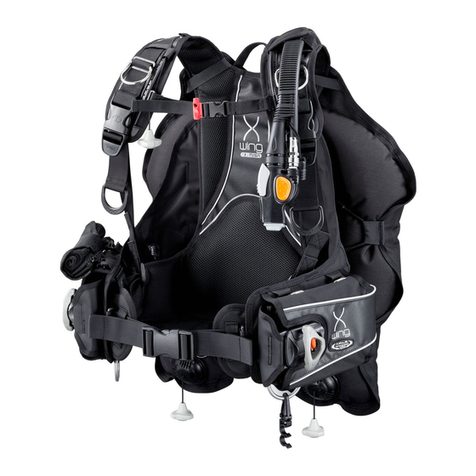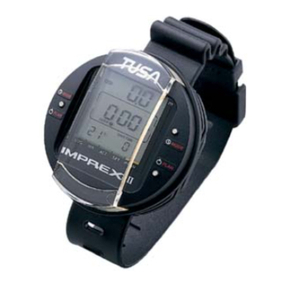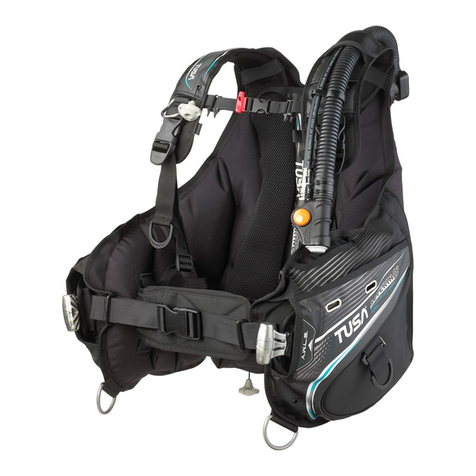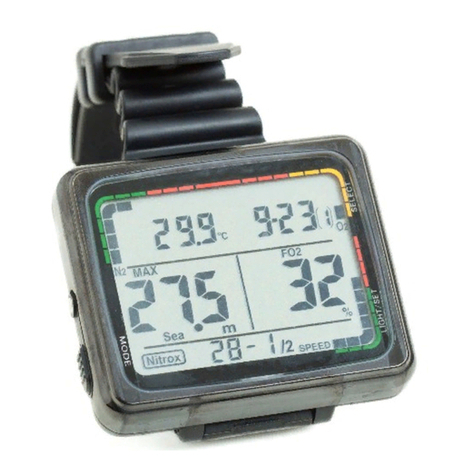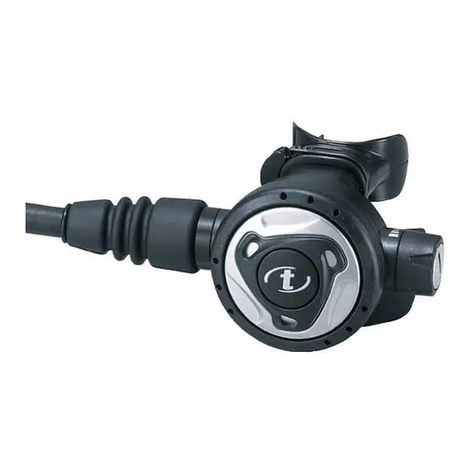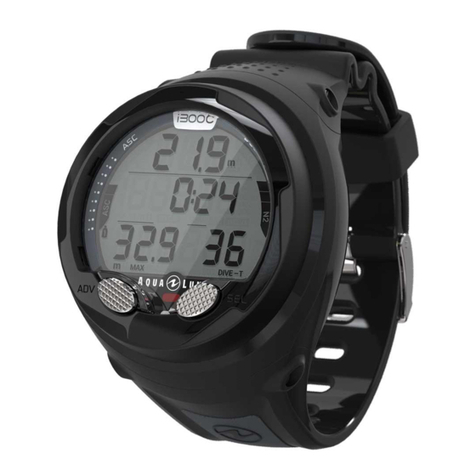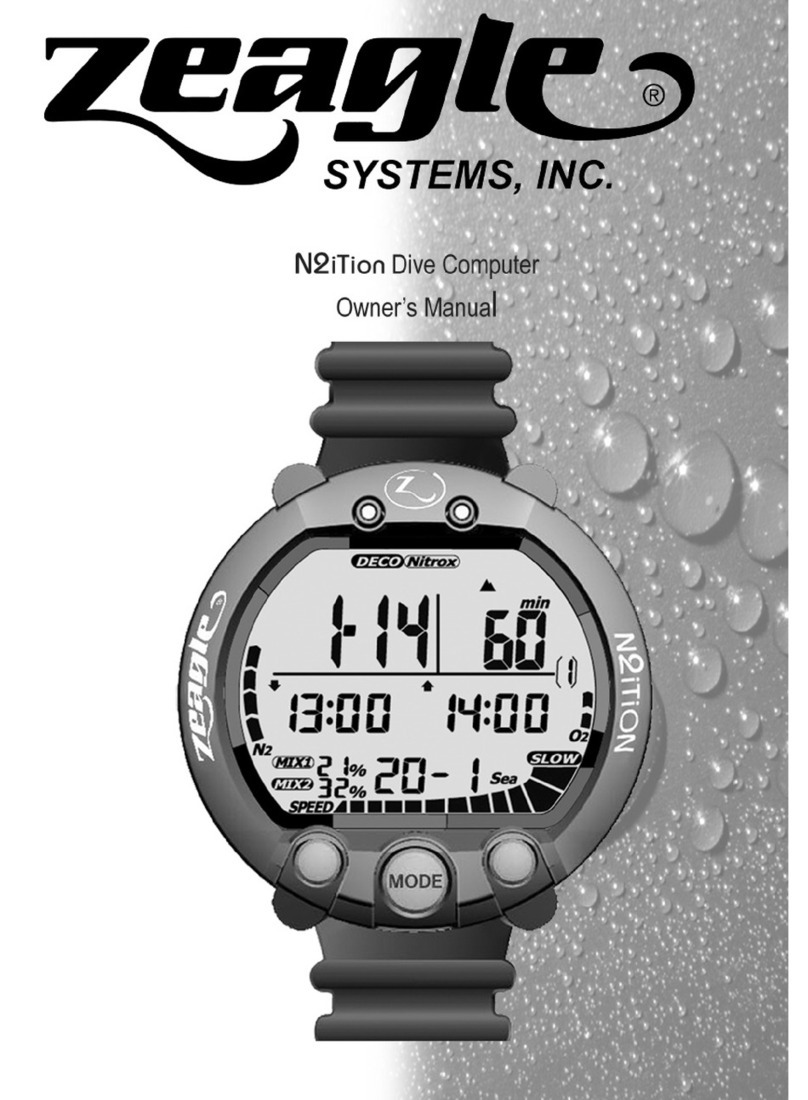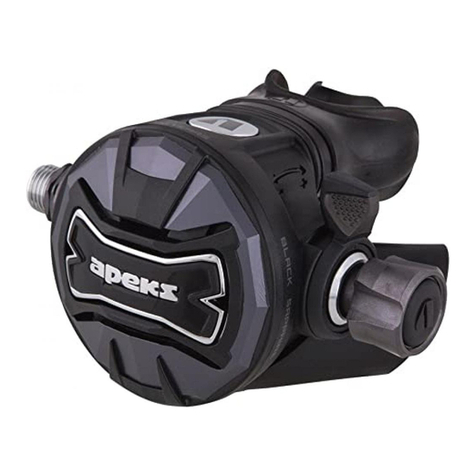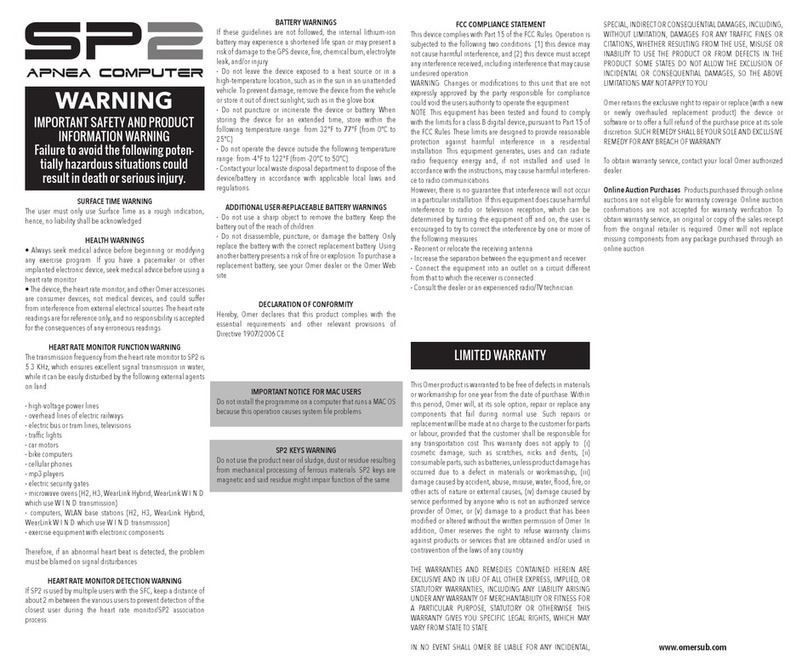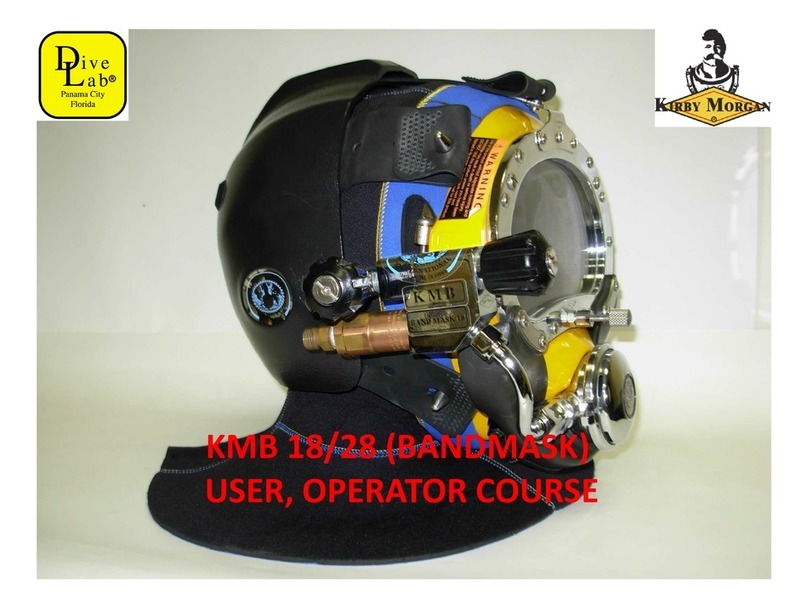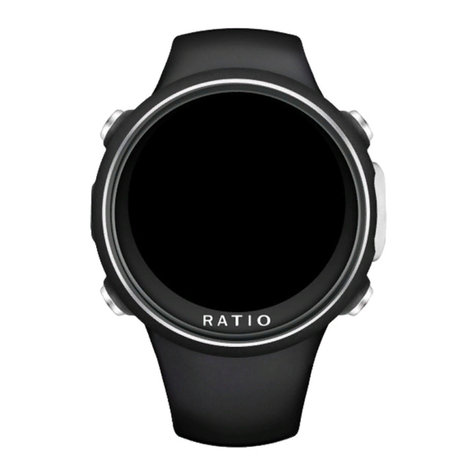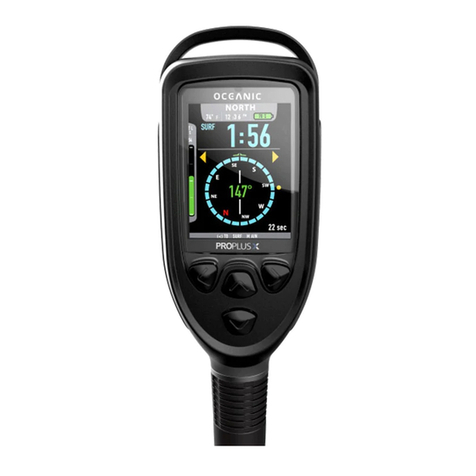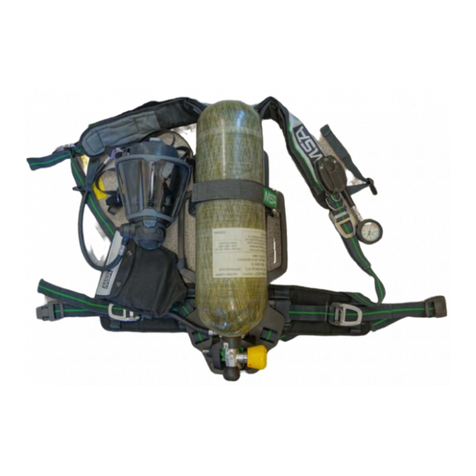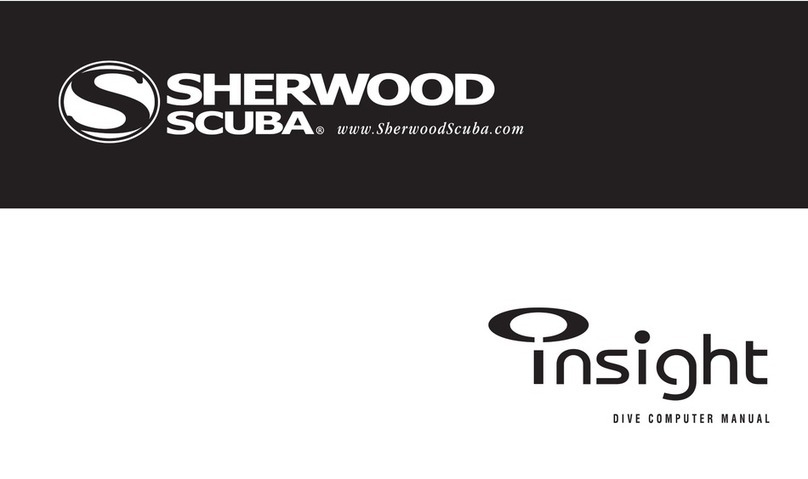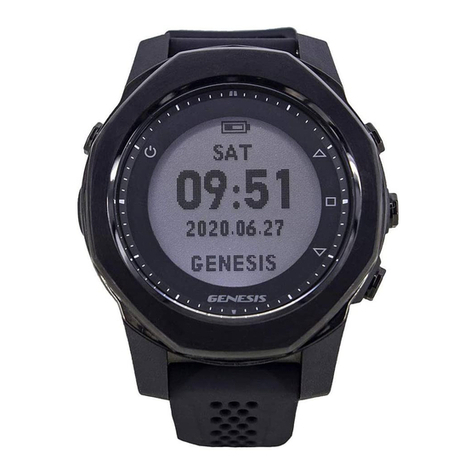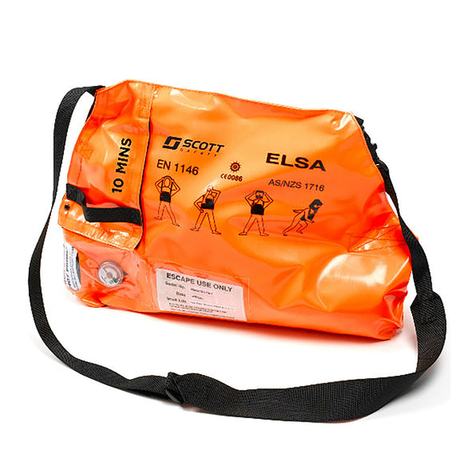Neither the IQ-600—nor any other dive computer presently
available—physically measures the amount of nitrogen present
in body tissues, or the rate at which this nitrogen is being
absorbed or released. Instead, the
IQ-600
monitors depth and
time, and uses this data to work a mathematical formula
designed to emulate how individuals in good general health
and whose physical characteristics do not place them among
those at higher risk of decompression illness are assumed to
absorb and release nitrogen from body tissues. Thus, the
IQ-600
cannot compensate for factors such as age, obesity,
dehydration, cold or exertion, which experts believe place
divers at greater risk of DCI. If these, or similar factors apply
to you, use the
IQ-600
—and any other dive computer or dive
table—with even greater caution.
Experts still know surprisingly little regarding the exact nature
and causes of decompression illness (also known as decom-
pression sickness, DCI or DCS). Susceptibility to DCI may
vary substantially from person to person and from day to day.
Neither the IQ-600—nor any other dive table or computer—
can guarantee that you will not suffer decompression illness.
Even though you use these items correctly, you may still
suffer DCI. Use your IQ-600 conservatively, and in conjunc-
tion with other dive planning devices, such as dive tables. Do
not rely on the IQ-600, or any similar device, as your sole
means of avoiding decompression illness.
8
